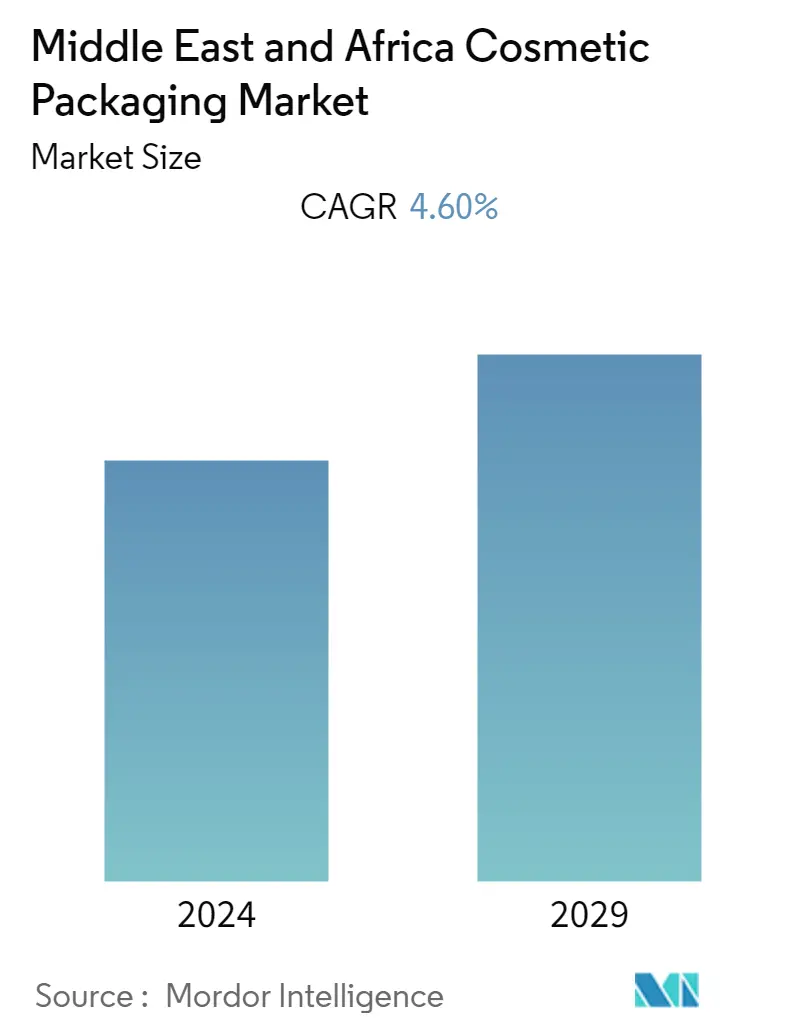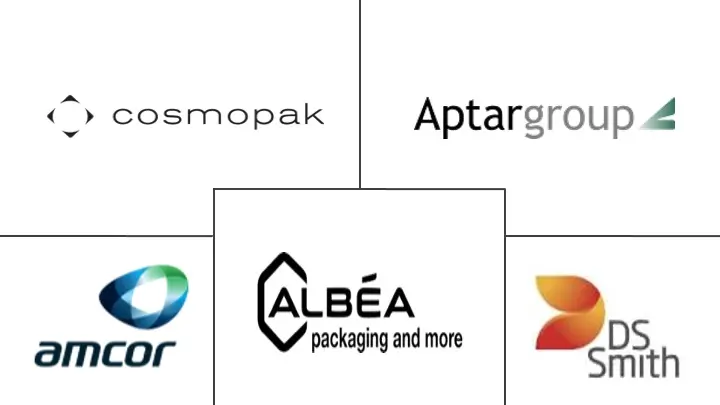Market Size of Middle East and Africa Cosmetic Packaging Industry

| Study Period | 2019 - 2029 |
| Base Year For Estimation | 2023 |
| Forecast Data Period | 2024 - 2029 |
| Historical Data Period | 2019 - 2022 |
| CAGR | 4.60 % |
| Market Concentration | Medium |
Major Players
*Disclaimer: Major Players sorted in no particular order |
Need a report that reflects how COVID-19 has impacted this market and its growth?
MEA Cosmetic Packaging Market Analysis
The Middle East and Africa Cosmetic Packaging Market is estimated to grow at a CAGR of about 4.6% over the forecast period 2020 to 2025. The cosmetic packaging market is driven by the proliferation in demand for cosmetic products, primarily due to increasing spending powers in the region, including Saudi Arabia and the United Arab Emirates, among others. Additionally, certain factors, such as the youthful population, increasing product availability, and increasing consumer awareness in the countries, are expected to play a significant role in the market's growth.
- Saudi Arabia has depicted one of the highest rates of cosmetics consumption in the MEA region and is also dominating the consumption of skin and hair care products. Consumers in Saudi Arabia are inclined to spend large sums on their appearance, which is expected to supplement the cosmetic industry; hence, in-turn increasing the demand for cosmetic packaging in the region.
- Also, the increasing adoption of cosmetics due to the increase in disposable income in the region is further expected to stimulate the value of these products' aesthetic value. Also, the increasing penetration of social media and e-commerce websites in the country proliferates the demand for cosmetic products, hence, stimulating the adoption of cosmetic packaging products.
- Further, the cosmetics industry in the region is gradually stepping up to combat excess packaging's major problem. Multiple brands are becoming more aware of the damage caused by the usage of single-use plastic. Eco-friendly beauty brands are now letting the users refill their empty shampoo and perfume bottles, such as Le Labo's hand-blended fragrances and cult-favorite Santal 33. The product is bottled in a clear glass jar with pared-back labels. The product comes packaged in a recyclable cardboard box. The brand is also offering an in-store service that enables its users to refill their empty fragrance bottle for a maximum discount of up to 20%.
- Moreover, in Mar 2020, the Environment Agency of Abu Dhabi (EAD), the largest environmental regulator in the Middle East, announced that it aims to eliminate avoidable single-use plastic usage non-plastic materials by the year 2021 by fostering a culture of recycling and re-use. These initiatives by the government are expected to affect the market significantly.
- The recent outbreak of coronavirus has affected the market causing major supply chain disruptions. However, initiatives led by multiples companies coupled with the increasing government political commitments and investments aligning to the initiative such as Saudi Vision 2030 are expected to drive the market. For instance, in Mar 2020, the Riyadh Municipality distributed free sanitation products across the city as part of their ongoing efforts to contain the coronavirus outbreak. The government officials will be handing out the products at traffic lights and in several mosques around the city. With the approval of the Saudi Food and Drug Authority, the municipality announced that it had increased the production of sanitizers and disinfectants.
